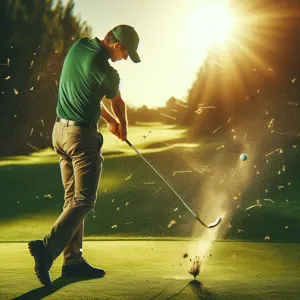In the vast expanse of the universe, stars twinkle like distant gems scattered across a cosmic tapestry, each harboring mysteries waiting to be unraveled.
But have you ever wondered how astronomers measure the staggering distances to these celestial bodies? The task is no small feat, as the universe is incomprehensibly large, and the methods used to gauge these distances are as fascinating as the stars themselves. From the ancient techniques of parallax to the groundbreaking discoveries of standard candles and redshift, this blog post will take you on a journey through the innovative approaches that astronomers employ to measure the cosmos. Join us as we explore the science behind determining how far away stars truly are and uncover the profound implications these measurements have on our understanding of the universe and our place within it.
1. Introduction to Cosmic Distances

When we gaze up at the night sky, we’re not just admiring twinkling points of light; we’re peering into the vast and intricate universe that surrounds us. The stars that dot the heavens are not merely decorations—they are distant suns, each with its own story, composition, and distance from Earth. Understanding how far away these celestial bodies are is a fundamental question in astronomy, one that helps us unravel the mysteries of the cosmos and our place within it.
Measuring cosmic distances is a complex challenge, akin to trying to gauge the size of an ocean from a single grain of sand. The vastness of space presents unique obstacles, and because stars are so far away, traditional measuring techniques simply won’t suffice. Instead, astronomers employ a variety of innovative methods to determine the distances to these luminous giants, each method suited for different ranges and types of celestial objects.
In this exploration of cosmic distances, we’ll delve into the key techniques that astronomers use, from the ancient methods of parallax to the cutting-edge technology of standard candles and redshift measurements. By dissecting these approaches, we’ll gain insight into how our understanding of the universe’s structure and scale has evolved over time. So, let’s embark on this enlightening journey through the cosmos, where every measurement not only reveals the distance to stars but also helps illuminate the vast tapestry of our universe.
2. The Importance of Measuring Stellar Distances
Understanding the distances to stars is fundamental to our grasp of the cosmos. Just as knowing the distance between two cities is essential for navigation on Earth, measuring the distances to celestial bodies is crucial for astronomers to map the universe accurately. Stellar distances provide context for the vastness of space, allowing us to understand the scale and structure of our galaxy and beyond.
One of the primary reasons measuring these distances is so important is that it enables astronomers to determine the luminosity of stars. By knowing how far a star is from Earth, scientists can differentiate between a dim star that is relatively close and a bright star that is much farther away. This luminosity information is vital for classifying stars, understanding their life cycles, and studying the processes that govern stellar evolution.
Moreover, the distances to stars are key to understanding the dynamics of our galaxy. They help astronomers piece together the motion of stars and the gravitational influences at play. This knowledge contributes to our comprehension of galactic structures and phenomena, such as the presence of dark matter and the formation of star clusters.
Additionally, measuring stellar distances plays a pivotal role in cosmic distance scales. By establishing accurate distances to nearby stars through methods like parallax, astronomers can extend their measurements to more distant objects using standard candles, such as Cepheid variables. This chain of distance measurements ultimately allows us to gauge the scale of the universe and investigate its expansion.
In summary, measuring stellar distances is not merely an academic exercise; it is a cornerstone of modern astronomy that enriches our understanding of the universe. Each measurement opens new avenues of inquiry and enhances our appreciation of the intricate cosmic tapestry in which we reside.
3. Historical Methods of Measuring Distances

The quest to measure the vast distances between stars has fascinated astronomers for centuries, leading to the development of several ingenious historical methods that laid the groundwork for modern astronomy. One of the earliest and most influential techniques is parallax, which relies on the apparent shift of a star’s position against more distant background stars as observed from different points in Earth’s orbit around the Sun. This method was first effectively employed in the 19th century by astronomers like Friedrich Bessel, who successfully measured the distance to the star 61 Cygni. By observing the star six months apart and calculating the angle of the shift, he could determine its distance in parsecs, marking a monumental step in stellar measurement.
Another notable approach was the use of standard candles, particularly Cepheid variable stars. Discovered by Henrietta Swan Leavitt in the early 1900s, these stars exhibit a consistent relationship between their brightness and the time it takes for them to pulsate. By observing the period of a Cepheid’s variability, astronomers can determine its intrinsic brightness and, by comparing it to its observed brightness, calculate its distance. This method became instrumental for measuring distances to far-off galaxies, significantly expanding our understanding of the cosmos.
Furthermore, the use of spectroscopic parallax offered another layer to historical distance measurement. By analyzing the spectrum of a star, astronomers could ascertain its temperature and luminosity, allowing them to classify it within the Hertzsprung-Russell diagram. This classification facilitated distance estimation by comparing the star’s known luminosity to its apparent brightness. Each of these methods, though limited by the observational technology of their time, contributed invaluable knowledge and paved the way for the sophisticated techniques we utilize today. As we delve deeper into the cosmos, it’s essential to appreciate these foundational techniques that have shaped our understanding of distance in the universe.
4. Parallax: The Foundation of Distance Measurement
Parallax is a fundamental technique in the field of astronomy, serving as the cornerstone for measuring the vast distances to stars. At its core, parallax involves observing the apparent shift in position of a nearby star against the backdrop of distant celestial objects as Earth orbits the Sun. This method harnesses the principles of geometry and triangulation, allowing astronomers to calculate distances with remarkable precision.
Imagine standing in a field and viewing a tree that is relatively close to you, while a mountain looms far in the distance. If you shift your position to the left or right, the tree appears to move against the mountain, which remains static. This phenomenon is the essence of parallax – as you change your viewpoint, nearby objects seem to shift more dramatically than those that are far away.
Astronomers apply this concept on a cosmic scale, measuring the angle of this apparent shift, known as the parallax angle, which is typically expressed in arcseconds. The formula used is relatively straightforward: the distance to a star in parsecs is equal to 1 divided by the parallax angle in arcseconds. For instance, if a star has a parallax angle of 0.1 arcseconds, it is located 10 parsecs away, or about 32.6 light-years.
The advent of space-based telescopes, such as the European Space Agency’s Gaia mission, has revolutionized the accuracy of parallax measurements. By eliminating the distortions caused by Earth’s atmosphere and providing a stable observational platform, these missions can measure parallax angles with unprecedented precision, enabling astronomers to chart the distances to millions of stars across our galaxy.
Understanding parallax is not only pivotal for measuring distance but also for constructing a cosmic map that reveals the structure of our Milky Way and beyond. By employing this technique, astronomers can unlock the secrets of the universe, shedding light on the nature of stars, their formation, and their evolution. In the grand tapestry of the cosmos, parallax stands as a vital thread, connecting us to the celestial wonders that lie beyond our reach.
5. The Role of Triangulation in Astronomy

Triangulation, a method that has roots in basic geometry, plays a pivotal role in the field of astronomy, enabling astronomers to measure the vast distances to stars with remarkable precision. At its core, triangulation involves creating a triangle by measuring the distance between two points on Earth and then observing a star from those two locations. This technique capitalizes on the principles of parallax—a phenomenon where the position of an object appears to shift against a distant background when viewed from different angles.
To illustrate this process, imagine standing at two distinct points on Earth, separated by a known distance, say one astronomical unit (the average distance from Earth to the Sun). As you observe a nearby star, you note its position relative to the more distant backdrop of other stars. By measuring the angle of the star from both vantage points, you create two sides of a triangle. The base of this triangle is the distance between your two observation points, while the angles allow you to calculate the distance to the star using trigonometric principles.
This method is particularly effective for measuring nearby stars, typically up to a few hundred light-years away. The closer a star is, the more pronounced the parallax effect, making it easier to determine its distance accurately. The precision of triangulation is further enhanced by modern technology, which utilizes high-resolution telescopes and advanced imaging techniques to capture the subtle shifts in a star’s position.
Triangulation not only provides a way to measure distances, but it also helps establish a reliable cosmic distance scale. By determining how far away nearby stars are, astronomers can then apply these measurements to more distant celestial objects, leading to a deeper understanding of the structure and scale of our universe. Thus, triangulation serves as an essential tool in the astronomer’s toolkit, bridging the vast expanses of space and enabling us to comprehend the distances that separate us from the stars.
6. Standard Candles: Using Known Luminosities
Standard candles are a fascinating tool in the astronomer’s toolkit, allowing them to measure vast distances in the universe with remarkable precision. The principle behind this method hinges on the relationship between a star’s intrinsic brightness, known as luminosity, and its observed brightness from Earth. By identifying specific types of stars—such as Cepheid variables or Type Ia supernovae—that have a well-established luminosity, astronomers can effectively gauge their distance from us.
When a standard candle is observed, its brightness can be measured. If we know how bright it truly is (its luminosity), we can apply a fundamental property of light: as distance increases, the light from an object spreads out, making it appear dimmer. This allows astronomers to utilize the inverse square law of light, which states that the brightness of a light source decreases with the square of the distance from the observer. By comparing the known luminosity with the observed brightness, they can calculate how far away the star—or the supernova—really is.
For example, Cepheid variables are special types of stars that pulsate at regular intervals, and their luminosity correlates directly with their pulsation period. This relationship provides a reliable means to determine their intrinsic brightness. Once the intrinsic brightness is established, astronomers can derive the distance by measuring how dim the star appears from Earth. This method has not only facilitated our understanding of nearby stars but also laid the groundwork for measuring distances to galaxies and the expansion of the universe itself.
In the grand cosmic landscape, standard candles serve as reliable beacons, illuminating the path to understanding our universe’s vastness. By mastering this technique, astronomers continue to unravel the mysteries of the cosmos, one star at a time.
7. The Cepheid Variable Stars Method

The Cepheid Variable Stars method is one of the most reliable techniques astronomers use to measure distances to stars, and it hinges on a fascinating characteristic of certain stars: their pulsation. Cepheid variables are a special class of stars that expand and contract in a regular cycle, leading to a predictable change in their brightness. This rhythmic variation occurs over a set period, which can range from just a few days to several weeks.
What makes Cepheid variables so valuable for distance measurement is the direct relationship between their pulsation period and intrinsic brightness, also known as luminosity. Henrietta Swan Leavitt, an American astronomer, was the first to recognize this relationship in the early 20th century. By observing a Cepheid’s pulsation period, astronomers can determine its absolute magnitude—the true brightness of the star if it were placed at a standard distance of 10 parsecs (about 32.6 light-years) from Earth.
Once the absolute magnitude is known, astronomers compare it to the apparent magnitude—the brightness of the star as seen from Earth. This comparison allows them to calculate the distance to the star using the distance modulus formula. The beauty of this method lies in its accuracy, as Cepheid variables can be observed in distant galaxies, providing a crucial stepping stone for measuring the vast distances of the universe.
Additionally, the Cepheid Variable method has played a pivotal role in establishing the cosmic distance ladder. By calibrating distances to various celestial objects, astronomers have been able to map out the scale of the universe, refining our understanding of its size and expansion rate. In essence, Cepheid variables are not just stars; they are cosmic beacons, illuminating the path for astronomers as they seek to unravel the mysteries of our universe.
8. Tying Distances Together: The Cosmic Distance Ladder
In the vast expanse of the universe, measuring the distance to celestial objects can feel like an insurmountable challenge. However, astronomers have developed a sophisticated methodology known as the Cosmic Distance Ladder, a hierarchical system that allows them to tie together various distance measurement techniques to create a comprehensive understanding of the universe’s scale.
At its foundation, the Cosmic Distance Ladder relies on parallax, a method that measures the apparent shift in position of nearby stars against the backdrop of more distant stars as Earth orbits the Sun. This technique is effective for stars within a few hundred light-years from Earth and serves as the first rung of the ladder. As we ascend, we encounter various other methods that extend our reach into the cosmos.
Next, we utilize standard candles, such as Cepheid variable stars, whose intrinsic brightness is known. By observing their brightness and comparing it to how dim they appear from Earth, astronomers can calculate their distance. This technique is pivotal for measuring distances to galaxies that are millions of light-years away.
As we climb higher, we encounter the Tying of Distances through supernovae, particularly Type Ia supernovae, which explode at a consistent brightness and act as beacons across the universe. By calibrating these supernovae with the distances obtained from Cepheid variables, astronomers can measure distances to much farther galaxies, effectively extending the reach of the Cosmic Distance Ladder into the depths of the universe.
With each successive rung, astronomers not only refine their distance measurements but also piece together the larger tapestry of the cosmos. By integrating various methods and calibrating them through overlapping observations, they create a coherent and reliable framework for understanding the scale of the universe, guiding us toward a deeper appreciation of our place within it. The Cosmic Distance Ladder thus stands as a testament to human ingenuity and curiosity, bridging the gaps between the stars and allowing us to measure the immeasurable.
9. Redshift and the Expanding Universe
The concept of redshift is a cornerstone in our understanding of the expanding universe, providing astronomers with a powerful tool to measure distances to faraway stars and galaxies. At its core, redshift refers to the phenomenon where light emitted from an object in space shifts toward the red end of the electromagnetic spectrum as the object moves away from us. This shift occurs due to the Doppler effect, which similarly alters the pitch of a sound as a source moves relative to an observer.
As the universe expands, distant galaxies recede from us, and their light stretches, increasing its wavelength. By measuring the degree of this redshift, astronomers can determine how quickly a galaxy is moving away. The greater the redshift, the faster the galaxy is receding, which in turn provides a direct correlation to its distance from Earth. This relationship is described by Hubble’s Law, which states that the velocity of a galaxy is proportional to its distance—a revolutionary discovery that has reshaped our understanding of the cosmos.
In practical terms, astronomers utilize spectrometers to analyze the light emitted by stars and galaxies. These instruments break down the light into its constituent colors, revealing the characteristic spectral lines of elements within the object. When the spectral lines are shifted toward the red, the extent of this shift can be measured with precision. Armed with this data, astronomers can calculate not only distance but also gain insights into the universe’s rate of expansion.
Understanding redshift also opens the door to exploring critical questions about the universe’s age and evolution. By observing the redshift of light from the most distant galaxies, scientists can peer back in time, witnessing the universe in its infancy. This remarkable ability to measure the cosmos and comprehend its dynamic nature underscores the profound relationship between light and distance, illuminating the vastness of space and our place within it.
10. Advanced Techniques: Gravitational Lensing
Gravitational lensing is one of the most fascinating and advanced techniques astronomers use to measure the distance to stars and other celestial objects. This phenomenon occurs when a massive object, such as a galaxy or a cluster of galaxies, lies between an observer and a distant light source. The immense gravitational field of the foreground object bends and distorts the light from the background source, creating a lensing effect. This bending of light results in multiple images of the same distant object or an enhanced brightness, allowing astronomers to glean valuable information about both the lensing object and the background source.
There are two primary types of gravitational lensing: strong lensing and weak lensing. Strong lensing occurs when the foreground mass is substantial enough to create distinct, multiple images of the background star or galaxy, often forming arcs or rings known as Einstein rings. These striking formations enable astronomers to not only measure the distance to the background object but also to estimate the mass of the lensing object based on the degree of light bending.
Weak lensing, on the other hand, involves subtler distortions that are not easily visible at first glance. Instead of producing multiple images, weak lensing results in slight elongations of galaxies in the background. By analyzing these distortions across large surveys of the sky, astronomers can infer the distribution of dark matter in the universe, as this elusive substance contributes significantly to the overall mass of lensing clusters.
Both strong and weak lensing provide crucial data that enhance our understanding of the cosmos. They offer a unique opportunity to probe the universe’s large-scale structure and help refine the cosmic distance ladder. By leveraging the properties of gravitational lensing, astronomers can extend their reach beyond what traditional methods allow, unveiling the mysteries of distant stars and galaxies while simultaneously illuminating the gravitational forces at play in the universe. As technology advances, the use of gravitational lensing will continue to evolve, offering deeper insights into the fabric of spacetime itself.
11. Space Telescopes: Enhancing Distance Measurements
Space telescopes have revolutionized our understanding of the universe, particularly in measuring the distance to stars and celestial objects. Unlike ground-based observatories, which grapple with the distortion of Earth’s atmosphere, space telescopes operate above this interference, offering a pristine view of the cosmos. This clarity allows astronomers to collect more accurate data about the light emitted by distant stars, making distance measurements more reliable.
One of the most prominent space telescopes, the Hubble Space Telescope, has significantly advanced our ability to calculate stellar distances through its high-resolution imaging and spectroscopy capabilities. By analyzing the light from stars, astronomers can determine their brightness, a crucial factor in the distance calculation process. For instance, using the technique of parallax—a method that involves measuring the apparent movement of a star against the background of more distant stars from different positions of Earth’s orbit—Hubble can achieve incredibly precise measurements.
Moreover, space telescopes are equipped with advanced instruments that can detect different wavelengths of light, from ultraviolet to infrared. This capability allows astronomers to study various types of stars, including those that are too faint or obscured by cosmic dust when observed from the ground. By utilizing these observations, scientists can employ methods such as the Cepheid variable stars technique, which uses the predictable brightness variations of these stars as a cosmic yardstick to measure distances.
In addition to Hubble, the upcoming James Webb Space Telescope promises to push the boundaries even further. With its advanced infrared capabilities, Webb will be able to observe the faintest and most distant stars and galaxies, providing even more data for refining distance measurements throughout the universe. As these space-based observatories continue to gather and analyze data, our understanding of the cosmos will deepen, allowing us to map the universe with unprecedented precision and accuracy. The work of space telescopes is vital not just for gauging distances but for piecing together the intricate puzzle of how our universe has evolved over billions of years.
12. Challenges in Measuring Stellar Distances
Measuring the distances to stars is a fundamental yet intricate task in the field of astronomy, fraught with various challenges that test the limits of our technology and understanding. Despite the remarkable advancements in observational techniques, astronomers face several hurdles that can complicate the measurement process.
One significant challenge is the vastness of space itself. The immense distances involved mean that even the closest stars are light-years away, making direct measurement methods, such as parallax, less effective over larger scales. Parallax relies on observing a star’s apparent movement against a more distant background as the Earth orbits the Sun. While this method is highly effective for nearby stars, it becomes increasingly difficult to apply as the target stars get farther away, leading to a greater margin of error.
Another complication arises from the atmospheric turbulence experienced when observing from Earth. Variations in air density can distort the light coming from distant stars, making them appear fuzzy or shifted. This atmospheric interference can hinder precise measurements and necessitate the use of space-based telescopes, which, although powerful, come with their own set of logistical and financial challenges.
Furthermore, the intrinsic brightness of a star—its luminosity—plays a crucial role in distance calculations. However, not all stars are created equal; some are variable stars that change brightness over time, complicating the process of determining accurate distances. Additionally, the presence of interstellar dust can obscure light from stars, leading to further miscalculations in distance due to the attenuation of light.
Finally, the expansion of the universe adds another layer of complexity. As galaxies move away from us, the light from distant stars is redshifted, altering the perceived distance to these celestial objects. Understanding and accounting for this redshift is essential for astronomers to ensure that their distance measurements remain accurate and reliable.
In summary, while astronomers have developed sophisticated methods and tools to measure stellar distances, they must continuously navigate a landscape filled with challenges—from the vastness of space and atmospheric conditions to variable star brightness and cosmic expansion. Each obstacle demands innovative solutions and highlights the ongoing quest for precision in our understanding of the universe.
13. The Future of Cosmic Distance Measurement
As we stand on the precipice of a new era in astronomy, the future of cosmic distance measurement promises to be both exciting and transformative. With advancements in technology and innovative methodologies, astronomers are poised to refine our understanding of the universe’s vast expanse like never before.
One of the most significant developments on the horizon is the deployment of next-generation space telescopes, such as the James Webb Space Telescope (JWST). Equipped with cutting-edge instruments capable of capturing unprecedented details in the infrared spectrum, JWST will allow astronomers to observe distant stars and galaxies with remarkable precision. This capability will not only enhance our ability to measure distances through traditional methods like parallax but will also aid in calibrating the cosmic distance ladder, providing a more accurate framework for understanding the scale of the universe.
Moreover, the advent of gravitational wave astronomy is set to revolutionize distance measurement. By observing the ripples in spacetime caused by the collision of massive objects, such as neutron stars or black holes, astronomers can infer distances based on the properties of the detected waves. This groundbreaking technique promises to provide new insights into the distances of objects that are otherwise challenging to measure, particularly those located in the far reaches of the cosmos.
In addition, the rise of artificial intelligence and machine learning is beginning to impact astronomical research significantly. These technologies can analyze vast datasets at unparalleled speeds, identifying patterns and making predictions that would be impossible for humans alone. By employing AI algorithms to process data from various telescopes and observatories, researchers can enhance the accuracy of distance measurements and uncover new celestial phenomena.
As we look to the future, the collaboration between international space agencies, observatories, and research institutions will play a crucial role in advancing our cosmic measurements. Together, they will continue to develop innovative techniques and technologies that will not only refine our current understanding but also inspire future generations to explore the mysteries of the universe. With each leap in measurement accuracy, we inch closer to answering fundamental questions about the structure and evolution of the cosmos, ultimately deepening our appreciation for the vastness that surrounds us.
14. Key Discoveries from Distance Measurements
The art and science of measuring cosmic distances have led to several groundbreaking discoveries that have profoundly shaped our understanding of the universe. These measurements, often requiring sophisticated techniques and advanced technology, have unveiled secrets that were once beyond our grasp.
One of the most significant discoveries stemming from distance measurements is the realization that our universe is expanding. Edwin Hubble’s observations, which correlated the distance of galaxies from Earth to their redshift, revealed that galaxies are moving away from us at speeds proportional to their distances. This finding not only confirmed the expansion of the universe but also provided evidence for the Big Bang theory, fundamentally changing our understanding of cosmic evolution.
Furthermore, distance measurements have allowed astronomers to assess the scale of the Milky Way and its place within the cosmos. Through parallax techniques and the use of standard candles—like Cepheid variables—scientists have been able to refine the size of our galaxy and map its spiral arms. This has led to a more accurate understanding of the Milky Way’s composition and structure, as well as its interactions with neighboring galaxies.
Another pivotal discovery made possible by precise distance calculations is the determination of the Hubble constant, which measures the rate of expansion of the universe. This constant has important implications for cosmology, influencing theories related to dark energy and the ultimate fate of the universe. Discrepancies in its estimated values have sparked debates and further research, emphasizing the dynamic nature of our understanding of cosmic phenomena.
Moreover, measuring distances has illuminated the life cycles of stars, providing insights into their formation and evolution. By determining how far away a star is, astronomers can better understand its intrinsic brightness and thus infer its age and chemical composition. This knowledge not only helps in tracing the life paths of individual stars but also contributes to our understanding of the evolution of galaxies and stellar populations.
In summary, the key discoveries resulting from distance measurements are not merely academic; they have profound implications for our understanding of the universe. From the expansion of the cosmos to the intricate lifecycle of stars, these measurements serve as the backbone of modern astronomy, continually pushing the boundaries of what we know about the universe we inhabit.
15. Conclusion: The Significance of Understanding Our Universe
In conclusion, understanding the vast distances that separate us from the stars is not merely an exercise in academic curiosity; it is a profound gateway to appreciating our place in the cosmos. As we peel back the layers of our universe, measuring these distances allows astronomers to unlock the stories written in the light of distant stars and galaxies. Each calculation, whether through parallax, standard candles, or redshift, adds a piece to the intricate puzzle of cosmic evolution, shedding light on the life cycles of stars, the dynamics of galaxies, and the very structure of the universe itself.
Moreover, grasping the scale of the universe instills a sense of humility and wonder. It reminds us that our planet is but a tiny speck in an expansive cosmos filled with mysteries yet to be unraveled. This understanding fuels scientific inquiry and inspires future generations of astronomers and explorers to push the boundaries of what we know.
As we continue to refine our techniques and develop new technologies, the distances we once thought insurmountable become more accessible, allowing us to connect with the universe on a deeper level. The quest to measure the cosmos not only enhances our scientific knowledge but also enriches our human experience, inviting us to ponder the questions that lie beyond our world and to celebrate the beauty of the night sky. Understanding our universe is not just about distances; it is about developing a richer, more profound appreciation for the intricate tapestry of existence that surrounds us.
In conclusion, measuring the vast distances to stars is a remarkable testament to human ingenuity and the relentless pursuit of knowledge. Through techniques like parallax, standard candles, and redshift, astronomers have unveiled the secrets of our universe, transforming the seemingly unfathomable into comprehensible data. As we continue to refine these methods and develop new technologies, our understanding of the cosmos will only deepen, opening doors to new discoveries and insights about the nature of our universe. We hope this exploration has ignited your curiosity about the stars above and inspired you to look to the night sky with a newfound appreciation for the incredible science that helps us understand our place in the cosmos. Thank you for joining us on this celestial journey—may your fascination with the universe continue to grow!

























